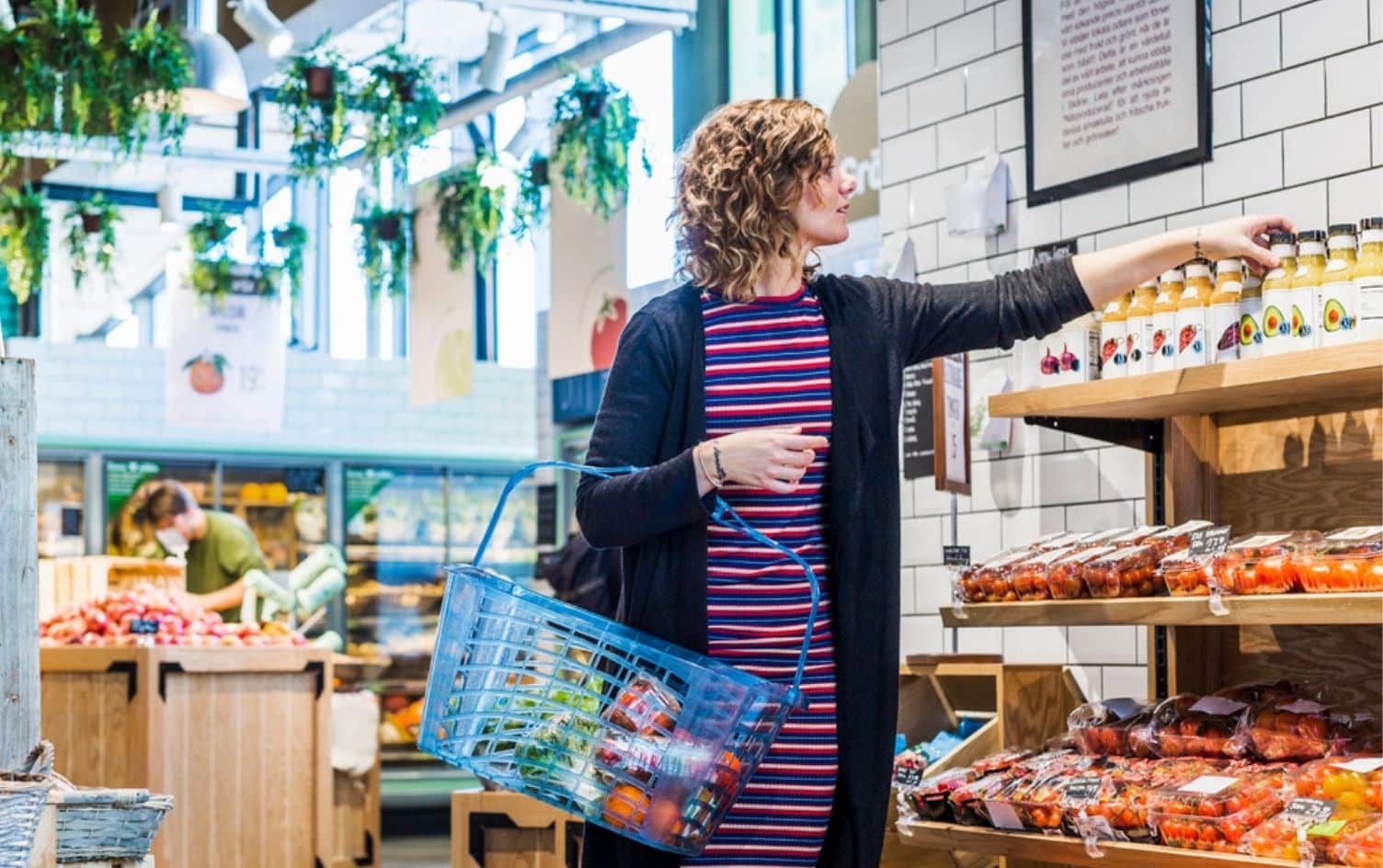The easiest way to eat enough vegetables (I recommend 3–4 servings per day) is to enjoy them, whether they are roasted, raw, steamed or in salad form. Often my clients equate salads to boring piles of lettuce, sad tomatoes, and a “light” or fat-free dressing. But that’s not how it has to be! The right dressing, along with hearty ingredients and colorful vegetables, can take a salad to an all-new level and have you looking forward to it. And, since time is of the essence, buying a bottled dressing is often the most feasible. Luckily, we are not lacking healthy options that can rival your favorite homemade versions. Here are some of my favorites.
CLICK TO TWEET THIS ARTICLE > Love the convenience of bottled dressings but trying to eat healthier? This dietitian is sharing the healthiest bottled dressings via @MyFitnessPal
BRIANNAS HOME STYLE RICH POPPY SEED DRESSING
This poppy seed dressing is one of my staples. It can dress up even the simplest salad and is also excellent as a dip. Ingredients are a combination of oil, vinegars, poppy seeds, onion, sugar and mustard flour, so it’s fairly simple. And, as with all of the dressings I’m listing, this one does contain calories and fat (about 150 calories and 13 grams of fat per 2 tablespoon serving). Because neither is a “bad” thing! Salad dressings with fat, mostly coming from oils like canola or olive, not only taste better, but they help the body absorb all of the wonderful fat-soluble vitamins like A and K from vegetables. And, if a salad dressing contains fat, it’s also going to contain calories. The important thing to remember is salads with fat-containing dressings are much more satiating, and help reduce hunger pangs, urges to snack or cravings for sweets that may result soon after having a “fat-free” version. This dressing also contains 6 grams of added sugar, as it is on the sweeter side, but this is OK as long as the rest of your diet is fairly low in added sugar. Remember, keeping the big picture in mind is key!
KEN’S SIMPLY VINAIGRETTE GREEK
Simple vinaigrettes are versatile and add just enough “oomph” to make a somewhat boring salad more exciting. This option has a hint of Parmesan cheese for a little extra flavor, and other simple ingredients like various vinegars, oil and spices. Nutrition-wise, it contains 13 grams of mostly unsaturated fats (1 gram saturated), no sugar or added sugar, and 130 calories per 2 tablespoon serving.
TESSEMAE’S ORGANIC EVERYTHING BAGEL RANCH
Need I explain this one? Everything bagel flavors taste excellent on a crisp salad. This dressing is creamy, thanks to egg yolks in its ingredient list, and it has the complex savory flavor of an everything bagel. Its ingredient list is simple and also includes other spices, oils and vinegars. Nutrition facts are similar to our other options, with 160 calories and 16 grams of fat (mostly unsaturated) per 2 tablespoon serving and zero grams of sugar.
PRIMAL KITCHEN GREEN GODDESS
Primal Kitchen dressings are made with avocado oil, which is rich in heart-healthy monounsaturated fats, as well as potent anti-inflammatory antioxidants. Because of this, their price point is a bit higher (around $8 per bottle) than the other salad dressings. Additional ingredients in the green goddess are simple and include herbs, spices, eggs and vinegars. Its nutrition is similar to our other examples, with 120 calories, 12 grams fat and zero grams of sugar per 2 tablespoon serving.
BOLTHOUSE FARMS CARROT MISO
The carrot-miso dressing is from Bolthouse Farm’s “plant-based” line, which means it doesn’t include dairy, eggs or other animal products. Its ingredients are simple and include carrots, ginger, soy sauce, miso, vinegar and oil. This dressing is a bit lower calorie compared to the others, with 40 calories and 3 grams of fat per 2 tablespoon serving, with only 1 gram of sugar. The zippy, savory flavor makes up for what might be missing when it comes to how satiating the dressing is, and can easily be remedied by including hearty ingredients in your salad like sunflower seeds, chickpeas, roasted beets, quinoa or broccoli.
THE BOTTOM LINE
Bottled salad dressings can make busy mealtimes easier and more veggie-forward, and they can and should be a pantry staple. Try to look for one that includes some fat, most of which is monounsaturated from plant oils like olive, avocado, canola and sunflower, to help your body absorb important fat-soluble vitamins and create a more satiating salad. Don’t worry too much about calories (Fat contains calories! Salads should have some calories!), try to be moderate with added sugars and keep them in the low single digits. Otherwise, enjoy eating more plants by pairing them with flavorful salad dressings and veggie dips.
Make progress every day while you work on mini fitness and nutrition goals, like walking more steps or learning to track macros. Go to “Plans” in the MyFitnessPal app for daily coaching and easy-to-follow tasks to keep you motivated.




